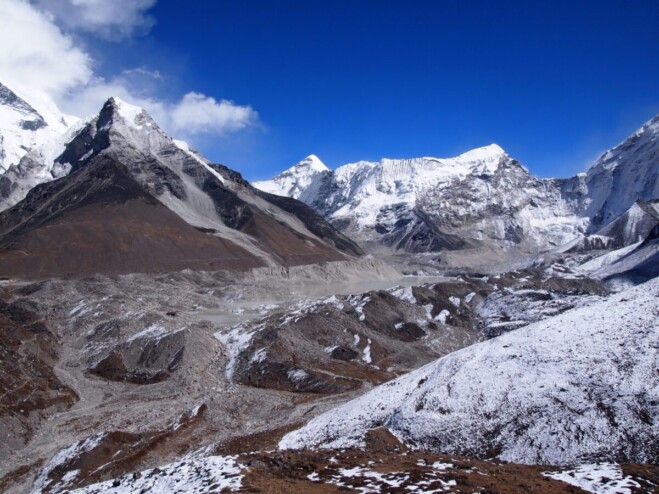

In the Himalayas, not far from the base of Mount Everest, lies the Imja-Lhotse Shar Glacier, where David Rounce conducted his doctoral research. From 2013 to 2017, Rounce and his team visited Nepal to measure the glacier as it rapidly receded — and as the lake at its base grew.
“To go to the same place and to see the lake expand and see how the glacier was thinning rapidly was quite eye-opening to say the least,” said Rounce, now an assistant professor at Carnegie Mellon University in Pittsburgh.
Rounce is the lead author of a January 2023 study in the journal Science that projects that the world’s glaciers could lose as much as 40% of their mass by 2100. The researchers modeled glaciers around the world — not counting the Greenland and Antarctic ice sheets — to predict how they will be affected by global temperature increases of 1.5 to 4 degrees Celsius (2.7 to 5 degrees Fahrenheit) above pre-industrial levels.
The study found that with 1.5 degrees Celsius of warming, 50% of the world’s glaciers would disappear and contribute 9 centimeters (3.5 inches) to sea level rise by 2100. If the world reaches 2.7 degrees of warming — the estimated temperature increase based on climate pledges made at the Conference of Parties (COP26) of the UN Framework Convention for Climate Change — nearly all glaciers in Central Europe, western Canada, and the U.S. (including Alaska) will have melted. If warming reaches 4 degrees Celsius, 80% of the world’s glaciers will disappear and contribute 15 centimeters (6 inches) of sea level rise.
Imja Tsho is a lake made up of meltwater from Imja-Lhotse Shar Glacier in Eastern Nepal and one of the fastest-growing lakes in the Himalayas. (Photo Credit: Courtesy of David Rounce)